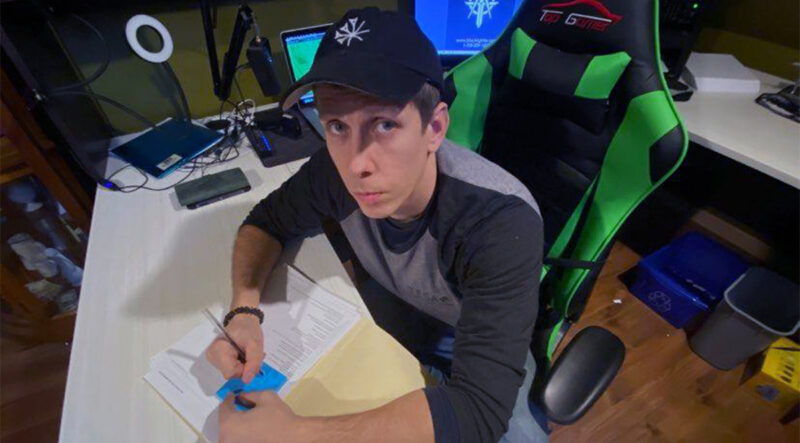Everything reported through the Civil Aviation Daily Occurrence Reporting System (CADORS) in 2021 can be explained.
That’s the conclusion UFO and UAP investigator Ryan Stacey drew while analyzing the data provided by the Department of National Defence and Transport Canada.
And if there are any lingering questions, then that’s when the access to information requests are performed.
However, Stacey was quick to acknowledge that his annual report on UFOs in Canadian airspace was delayed, in part, by the COVID-19 pandemic. Documents he usually gets from the department arrived later than expected, thus hampering his 93-page Canadian Current Event Survey.
CADORS’ primary objective is to compile details of eyewitness accounts involving Canadian-registered aircraft, as well as events that happen at Canadian airports, within our airspace or within international airspace for which Canada bears responsibility.
The Penetanguishene native said while he’s waiting for the data from 2022, he’s been able to compile 2021’s data into the survey. And what he discovered wasn’t outside the norm.
From January 1 to December 31, 2021, Transport Canada received 137 occurrences interpreted as drones, unmanned aerial vehicles or UFOs. There was a 23 percent increase from 2020.
“I’ve come to the conclusion that all of the UFO ones are identified, whereas (other) reports allude to the woo and the mysticism,” he admitted. “I still believe in (UFOs), it’s just we need to look at what the government’s doing and look at what the civilians are seeing at the same time and do a comparison report.”
Province-to-province breakdown had Ontario, British Columbia and Quebec ranking in the Top 3 with 43, 38 and 22 reports, respectively. The one detail Stacey said he started focusing on is the reported object height above sea level. It’s one detail that helps determine what UAP is a drone, as the maximum altitude to fly commercial drones in Canada is 400 feet above ground level.
“I started adding height to get an idea of how high these objects are when these things are reported,” he said. “I get to dabble in a little bit between restricted airspace and what we know.”
The assumption is that the pandemic also played a considerable role in the number of eyewitness accounts by pilots from 2020 to 2021.
As for those wanting full disclosure from the Canadian government, Stacey said he believes they won’t even through the access to information and privacy (ATIP) process.
“I’m trying to at least trust the government to a point that what they’re telling us is the truth,” he added. “It’s information we have to have, put the pieces together, and then feel comfortable about it and feel safe.”
Any data Stacey said he considers to be questionable, he’ll put in an ATIP. All the data used in the survey, especially that used from CADORS, is available on The Experiencer Support Association website.
“I’m only working with the information that is publicly available, so if you’re a pilot reading that (report), there’s a guy who’s trying to figure it out,” he admitted. “(The pilot) might be able to teach me a thing or two, or tell me I’m right, or tell me I’m wrong.”

